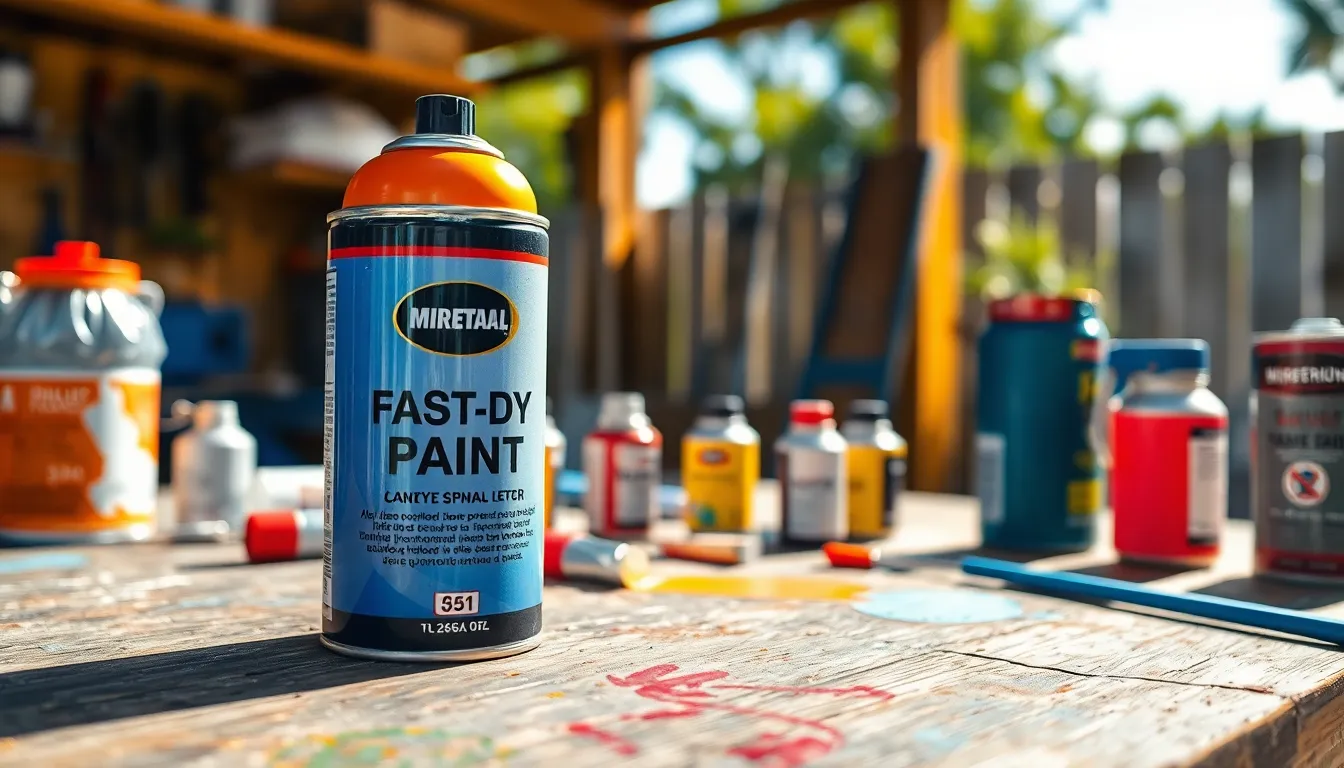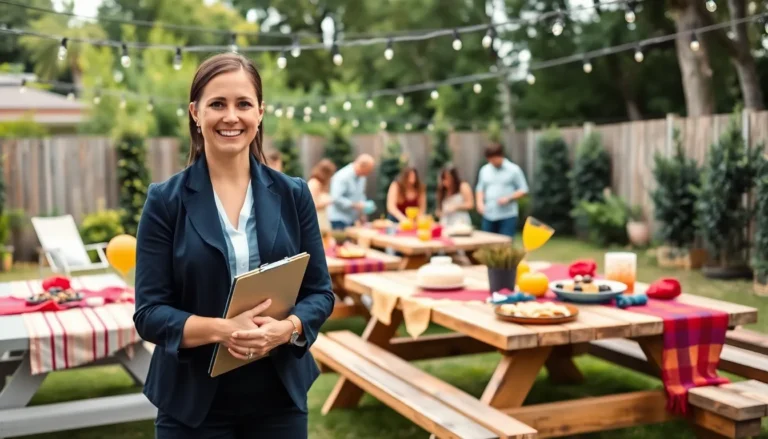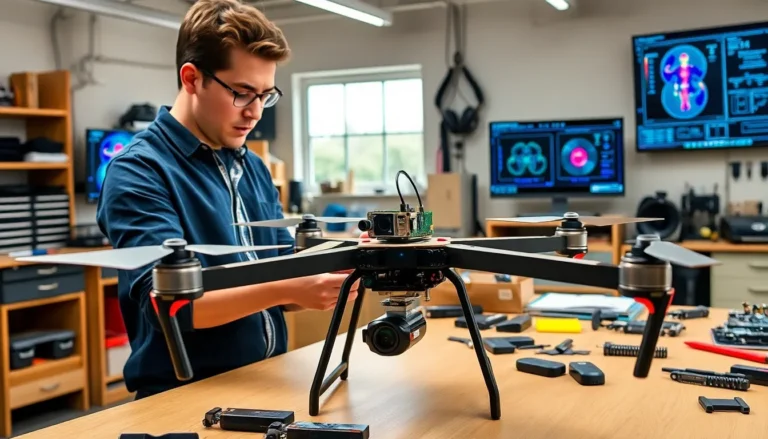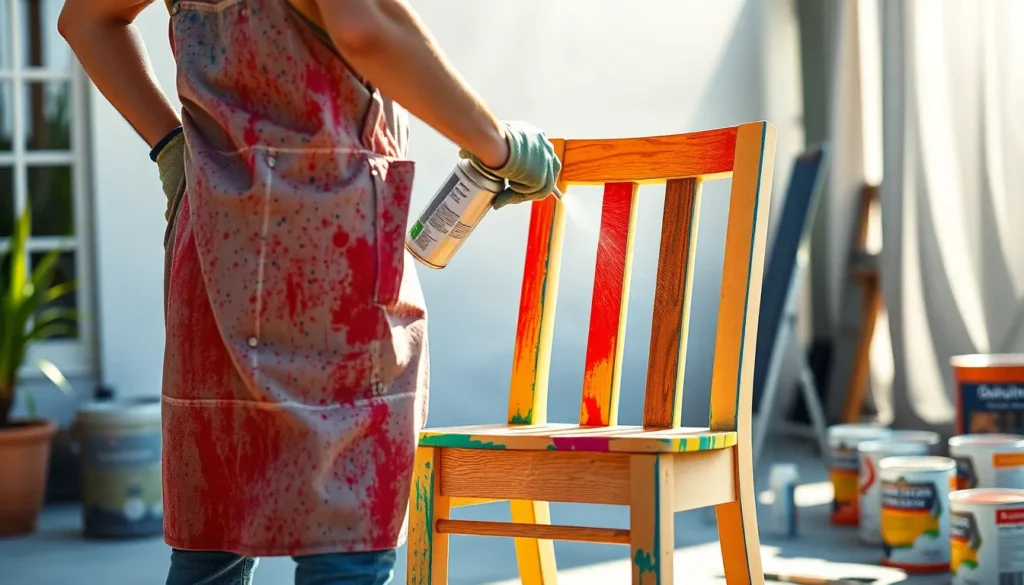Table of Contents
ToggleWhen tackling a DIY project, understanding drying times for spray paint can make all the difference. Whether it’s a quick touch-up or a complete overhaul, knowing how long it takes for spray paint to dry helps ensure a flawless finish. Various factors like temperature humidity and the type of paint used can significantly influence drying times.
Typically, spray paint dries to the touch within minutes but may require more time for full curing. This article dives into the specifics of drying times and offers tips to achieve the best results. By mastering the drying process, anyone can elevate their painting skills and create stunning projects that last.
Understanding Spray Paint Drying Times
Spray paint drying times vary significantly based on multiple factors. Awareness of these factors enhances the effectiveness of DIY projects.
Factors Influencing Drying Time
- Temperature: Higher temperatures accelerate drying times. Optimal temperature ranges between 60°F and 85°F.
- Humidity: Increased humidity slows drying. Ideal humidity levels should stay below 50%.
- Airflow: Improved airflow enhances evaporation. Well-ventilated spaces reduce drying times.
- Coat Thickness: Thicker applications take longer to dry. Applying thin, even coats speeds up the process.
- Surface Type: Porous surfaces absorb paint, affecting drying times. Non-porous surfaces allow quicker drying.
- Paint Type: Oil-based spray paints take longer to cure compared to water-based options.
Types of Spray Paint
- Acrylic Spray Paint: Dries quickly, typically within 15-30 minutes to touch. Full cure can take 24 hours.
- Enamel Spray Paint: Takes longer, around 20 minutes to touch. Complete curing may extend to several days.
- Lacquer Spray Paint: Dries rapidly in about 10 minutes. Full cure usually occurs within 1-2 hours.
- Chalk Spray Paint: Touch dry in 30 minutes, curing may take up to 24 hours.
- Fabric Spray Paint: Generally dries to the touch in 1-2 hours, with full curing taking 48 hours.
General Drying Times for Spray Paint

Understanding the drying times for various spray paints aids in planning DIY projects effectively. The type of spray paint significantly affects how long it takes to dry.
Fast-Dry Formulations
Fast-dry spray paints are designed for quick application and efficiency. These formulations typically dry to the touch within 10 to 20 minutes. Examples include specialty paints tailored for outdoor use or craft projects, which emphasize rapid drying to facilitate immediate handling and layering.
Standard Spray Paint
Standard spray paint generally requires more time to reach touch-dry status. Most standard spray paints dry to the touch in about 20 to 30 minutes, with full curing taking up to 24 hours. Factors like environmental conditions and application thickness can extend these times, making it essential to account for these variables when planning a project.
Tips for Faster Drying
Optimizing conditions can accelerate spray paint drying times. Consider environmental factors and application techniques for the best results.
Environmental Considerations
- Temperature: Increasing the spray area temperature enhances drying speed. Aim for at least 70°F.
- Humidity: Lower humidity levels expedite evaporation. Ideal humidity is below 50%.
- Airflow: Enhancing ventilation disperses solvents quickly. Use fans or paint in breezy areas.
- Sunlight Exposure: Direct sunlight can boost surface temperature. Select outdoor locations for better results.
- Surface Preparation: Clean and prime surfaces beforehand. Smooth surfaces reduce paint absorption, improving drying efficiency.
Application Techniques
- Thin Coats: Apply multiple thin layers rather than one thick coat. This approach reduces drying time.
- Distance from Surface: Maintain a distance of 6 to 12 inches when spraying. This distance helps control the application thickness, leading to quicker drying.
- Overlap Strokes: Ensure even coverage with slight overlap. Consistent application enhances drying and minimizes uneven surfaces.
- Timing Between Coats: Wait for the first coat to dry to the touch before adding additional layers. This strategy helps maintain optimum drying conditions.
- Use Fast-Dry Formulations: Select paints labeled as quick-drying to shorten the time before handling. Such formulations often dry within 10 to 20 minutes.
Testing for Dryness
Testing for the dryness of spray paint involves tactile methods and visual indicators to confirm readiness for the next steps in a project.
Tactile Methods
Tactile methods assess dryness through touch. Lightly pressing a finger against the painted surface provides a quick check. If paint feels tacky, it hasn’t fully dried. If it feels firm and doesn’t leave a fingerprint, it’s likely dry enough for further work. For best results, wait at least 30 minutes after application before testing, as some paint types require more time to set.
Visual Indicators
Visual indicators offer a clear look at the drying process. A dull finish typically means the paint is nearly dry, while a glossy surface often signifies wet paint. Changes in color may also indicate drying; paint transforms from vivid when wet to a muted tone as it dries. Watching for consistent texture across the painted area ensures uniformity and proper drying. Checking these visual cues can prevent premature handling or misuse of the painted item.
Understanding spray paint drying times is crucial for achieving the best results in any DIY project. By considering factors like temperature humidity and application techniques one can significantly enhance the painting process. Knowing the differences between various spray paint types allows for better planning and execution.
Optimizing conditions and following best practices can lead to quicker drying times and a smoother finish. With the right knowledge and techniques anyone can master the art of spray painting ensuring durable and visually appealing results.







